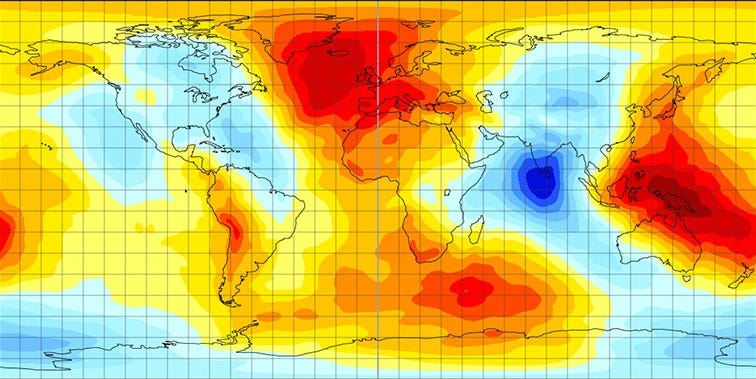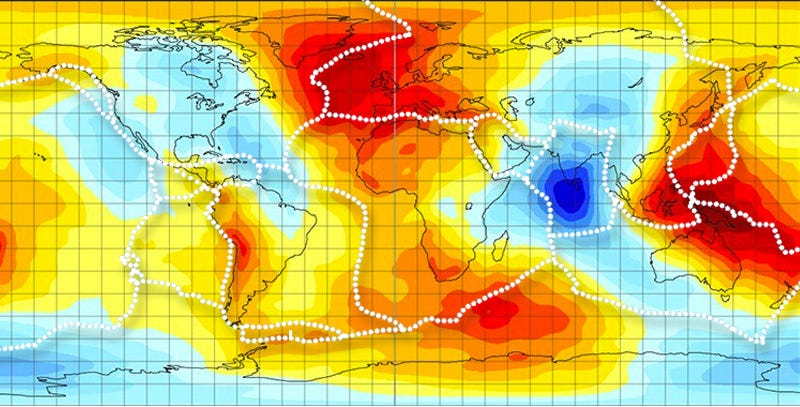Exploring the Unusual Gravity of Sri Lanka and Its Implications
Written on
Chapter 1: The Cost of Launching from Sri Lanka
If everything were equal (which is not the case), launching from Sri Lanka could save SpaceX approximately $190,000 compared to Florida. This advantage arises from the region's notably weak gravitational pull.
In school, we learned that objects fall at an average rate of 9.8 m/s²; however, this figure is just a global mean. Gravity decreases at higher altitudes and along the equator due to the Earth’s rotation causing a slight bulge. Additionally, variations in rock density can also influence gravitational strength.
In Colombo, the gravitational force is measured at 9.7773 m/s², while in Cape Canaveral, Florida, it is 9.7979 m/s², where SpaceX launches its Falcon Heavy. Consequently, if an object is dropped from a height of 100 meters in Sri Lanka, it will take 21.5 milliseconds longer to reach the ground than if it were dropped in Florida. This reduction in gravitational force means that rockets launching from Sri Lanka would theoretically experience a 0.215% decrease in gravitational pull, which could lead to lower fuel expenses. In the context of a $90 million launch, this amounts to a notable savings of around $190,000, although it pales in comparison to the overall costs involved in the launch process.
Why does Sri Lanka experience such low gravity? Could it be an ancient launch site or perhaps a reflection of a less serious approach to space exploration? The leading theoretical explanation points to the presence of water-rich rocks.
Earth's gravitational field is significantly weaker in certain areas (depicted in dark blue) due to the existence of water-laden materials that sit atop the remnants of tectonic plates that have long been subducted. This suggests that the rocks in this region are less dense, resulting in diminished gravity. Researchers have found that sound waves travel faster through denser materials (like water compared to air). This difference in speed indicates that lighter, less dense materials rest atop denser layers, likely due to their water-rich composition.

Section 1.1: The Geological History of the Indian Plate
How did this moisture permeate our rocks? The Indian Plate has a fascinating geological history that contributes to the region's unique gravity profile. Approximately 88 million years ago, this plate began its rapid journey northward at a rate of 31 cm per year, setting a record for the fastest movement of land. It has since decelerated to 5 cm per year.
When the Indian Plate collided with Eurasia, it underwent subduction, leading to the uplift of the Himalayas. During this process, vast amounts of rock were submerged into the Earth's molten mantle, where the heat released water, contributing to the buoyancy of the crust above.
This ongoing interaction has resulted in the crust becoming increasingly hydrated and, consequently, lighter over millions of years, which accounts for the measurable reduction in gravity.

Section 1.2: Personal Experiences in Low Gravity
Living in Sri Lanka means I experience 0.215% less weight compared to the West. However, this minor difference doesn’t translate into significant savings for me, as my daily experiences remain largely unchanged. I still face the same challenges with my waistline, even if it feels a tad easier to move.
This slight gravitational variance could potentially be beneficial for concepts like a space elevator, as envisioned by Sri Lankan resident Arthur C. Clarke. Currently, we utilize this gravity data to forecast ocean currents or locate oil and gas reserves, but residing here doesn’t confer any particular advantages regarding everyday life.
To the average person, the peculiarities of the Earth’s gravity are simply intriguing.
This video titled "NASA Discovered Something Weird About the Earth's Gravity" explores recent discoveries about gravity variations and their implications for space travel.
Another informative video titled "15 Places on Earth Where Gravity Doesn't Seem to Work" showcases various locations around the globe where gravity behaves unexpectedly.